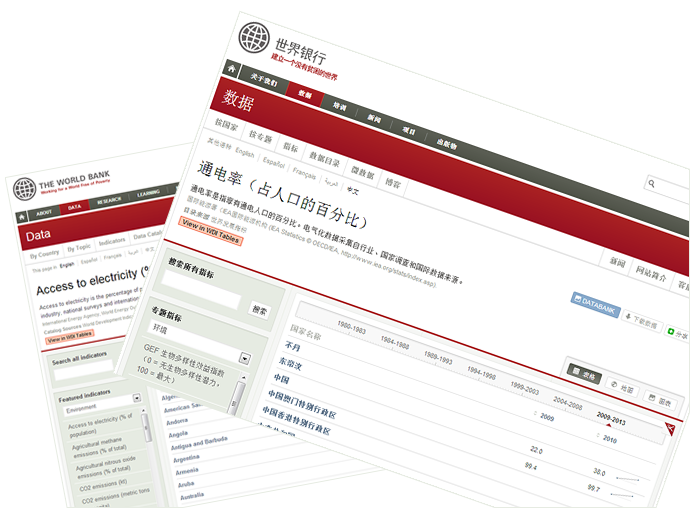
William Shakespeare once wrote, “There are a thousand Hamlets in a thousand people’s eyes.” Similarly, different people have different understandings of database services. Some people believe it is a type of personalized service, some believe it’s a value-added service, while others believe it’s a solutions-driven service. For us students, database services are vital to our research.
As a form of knowledge service, databases should be adapted to the changing needs of users, supporting both knowledge consumption and knowledge creation. A good database helps not only to convert “data” into “outcomes,” but also achieve the goal of pooling wisdom and creating knowledge by enhancing a user’s creativity with its rich resources and services. In my view, the World Bank’s Open Data has truly fulfilled these functions.
In 2012, when I was interning at the Development Research Center of the State Council, I had the opportunity to read the newlypublished China 2030: Building a Modern, Harmonious, and Creative Society. I was fascinated by its comprehensive data, rigorous analysis and innovative conclusions, especially its rich empirical statistics. This also aroused my curiosity – I was keen to discover the powerful databases that support this report.
While writing a paper about the areas without electricity, I tried to conduct an empirical study of these areas from the perspective of comparative politics. Lack of data of other countries made the work difficult. Then the World Bank’s databases came to mind, and I went to the World Bank’s Open Data site to try my luck. To my happy surprise, in the Environment category, what caught my eye first was “Access to electricity (% of population).” Although the data only covers about 80 countries for the two years of 2009 and 2010, it was sufficient to support my comparative study of countries. With the help of this data set, I successfully completed my paper.

Database service is a new type of service that emerged with the knowledge economy. In many ways, it represents a higher level of information service. The World Bank’s Open Data has facilitated development, generation, organization, dissemination and use of knowledge, and the “positioning” of researchers across different countries, thereby significantly improving the efficiency and quality of our research.
To me, the Bank’s Open Data site is – like navigation lights – powerful and irreplaceable, guiding the “ship of research” toward success.


Join the Conversation